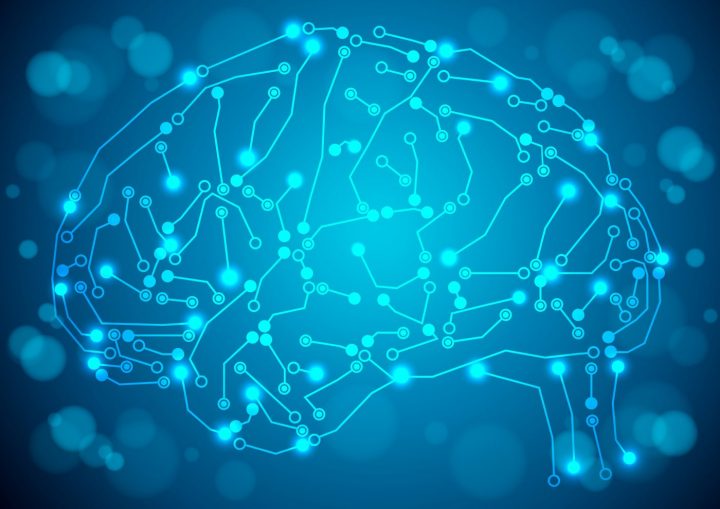Deep Brain Stimulation Eases Parkinson’s Symptoms by Directly Raising Dopamine Levels, Study Suggests

Photo by Shutterstock Music helps connections in the brain.
Deep brain stimulation (DBS) eases tremors and muscle rigidity, and improves cognition and mood in Parkinson’s patients by raising dopamine levels in the brain, a small study from Johns Hopkins Medicine suggests.
The research, “Effect of STN DBS on vesicular monoamine transporter 2 and glucose metabolism in Parkinson’s disease,” was published in the journal Parkinsonism and Related Disorders.
DBS is given to Parkinson’s patients whose motor symptoms do not respond well to medication. In this procedure, fine wires are inserted into the brain and connected to an electrical current source to stimulate areas responsible for movement control, such as the subthalamic nucleus (STN).
But the processes through which DBS changes brain activity are not completely understood.
Studies using positron emission tomography (PET) imaging indicate that brain metabolism is altered but dopamine levels unchanged after DBS. Still, the vast network linking dopamine-producing neurons to various brain regions suggested to the Hopkins team that this chemical messenger could still be a key part in the efficacy of DBS.
“Even if dopamine-producing cells are not activated directly, electrically stimulating other parts of the brain, particularly those that receive information from dopamine-producing cells, can indirectly increase dopamine production,” Kelly Mills, MD, a study co-author, said in a news release written by Vandana Suresh.
The Parkinson’s Disease News Today forums are a place to connect with other patients, share tips and talk about the latest research. Check them out today!
Specifically, the investigators focused on a protein called vesicular monoamine transporter (VMAT2), which regulates dopamine packaging into tiny vesicles and its subsequent release into the synapse, the site where two nerve cells communicate. Using PET scans, prior research confirmed that increases in brain dopamine levels with levodopa — a mainstay of Parkinson’s treatment — are associated with decreases in the amount of VMAT2, and vice versa.
The team used a tracer for VMAT2 and another for glucose, intended to track changes in brain activity. Among the seven patients (mean age of 67, range 60–74; all white), four were men and three were women.
Besides PET scans taken before and four-to-six months after DBS targeting of the subthalamic nucleus, these patients also underwent motor function evaluations with the Movement Disorder Society-Unified Parkinson’s Disease Rating Scale, psychological assessments — such as the Hamilton Depression Rating Scale and the Neuropsychiatric Inventory — and cognitive tests.
Results revealed that DBS led to significantly fewer tremors and, to a lesser extent, lesser muscle rigidity. Other benefits included improvements in cognitive function and mood, with depression scores lowering as much as 40%.
Suggesting higher amounts of dopamine, all seven patients showed lower levels of VMAT2 after DBS in the caudate and the putamen — two brain areas important to motor control — and in the brain’s cortical and limbic regions, which are implicated in movement, mood, and cognition.
Glucose metabolism was also lower in the striatum — which includes the caudate and the putamen — and higher in cortical areas and the cerebellum, which has a major role in motor coordination, balance, and speech. Of note, the striatum is a key component of the motor and reward systems of the brain.
The data further demonstrated that lower VMAT2 levels were associated with eased tremors and lesser depressive symptoms. They also correlated with decreased striatal, and increased cortical and limbic, metabolism.
Overall, the correlation between VMAT2 and glucose PET scans suggest that having more dopamine may be central to the restored brain activity achieved with DBS, Mills said.
Shifting the approach taken to track dopamine was key for these findings, the scientist added. “Rather than looking at the amount of dopamine bound on receptors of dopamine-receiving cells, we looked at VMAT2 concentrations within dopamine-producing cells, which may be more sensitive to detecting changes in dopamine with deep brain stimulation,” she said.
Gwenn Smith, PhD, the study’s lead author, added: “Our study is the first to show in human subjects with Parkinson’s disease that deep brain stimulation may increase dopamine levels in the brain, which could be part of the reason why these people experience an improvement in their symptoms.”
Although cautioning that larger studies are needed to more effectively gain from DBS use, likely by determining better targets for stimulation, the scientists added that a deeper understanding of how this procedure works in Parkinson’s “will inform [the] development of more effective treatments, treatment response predictors and ultimately, will have implications for improving the clinical care” of people with Parkinson’s, depression and Alzheimer’s.






